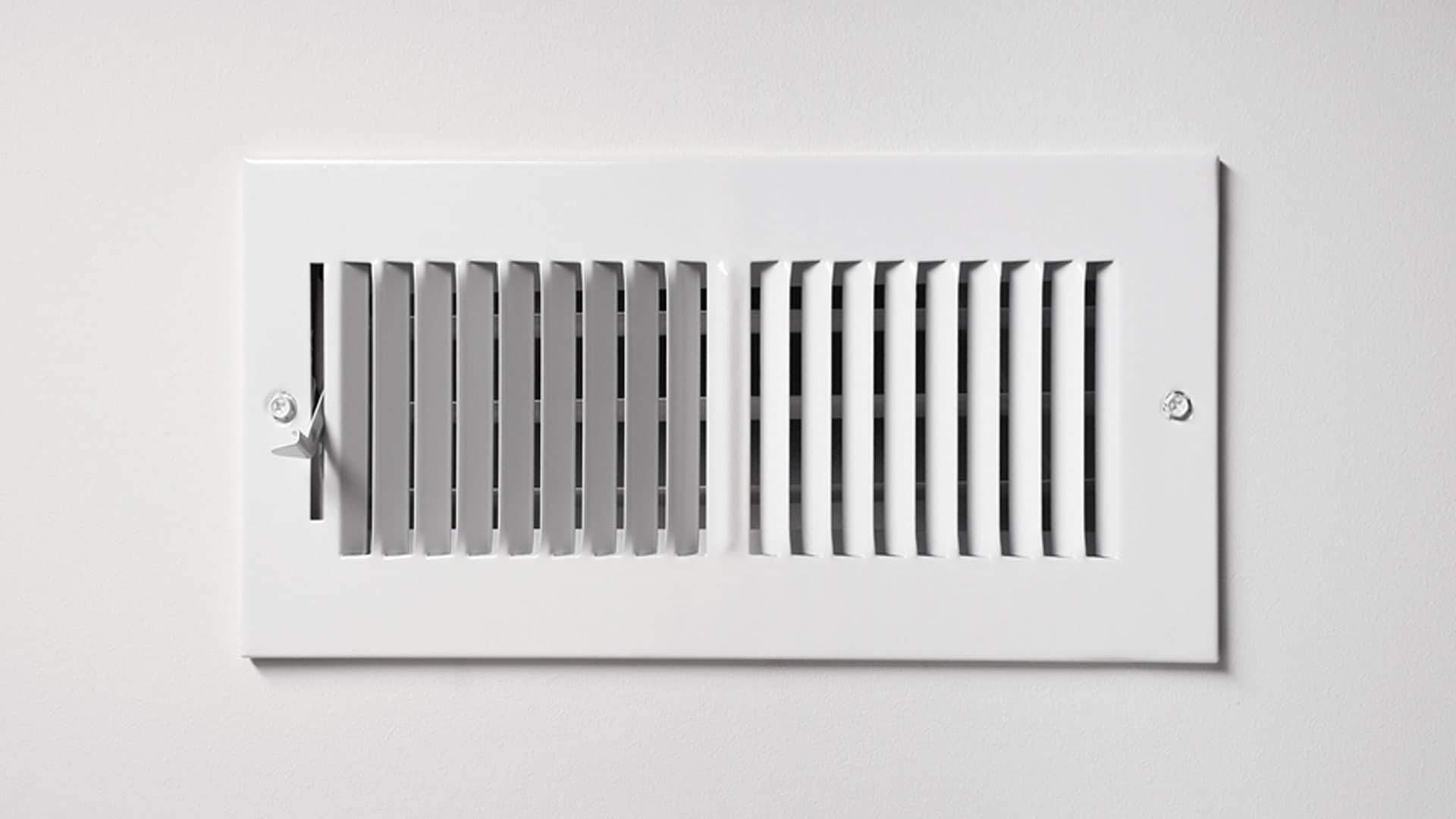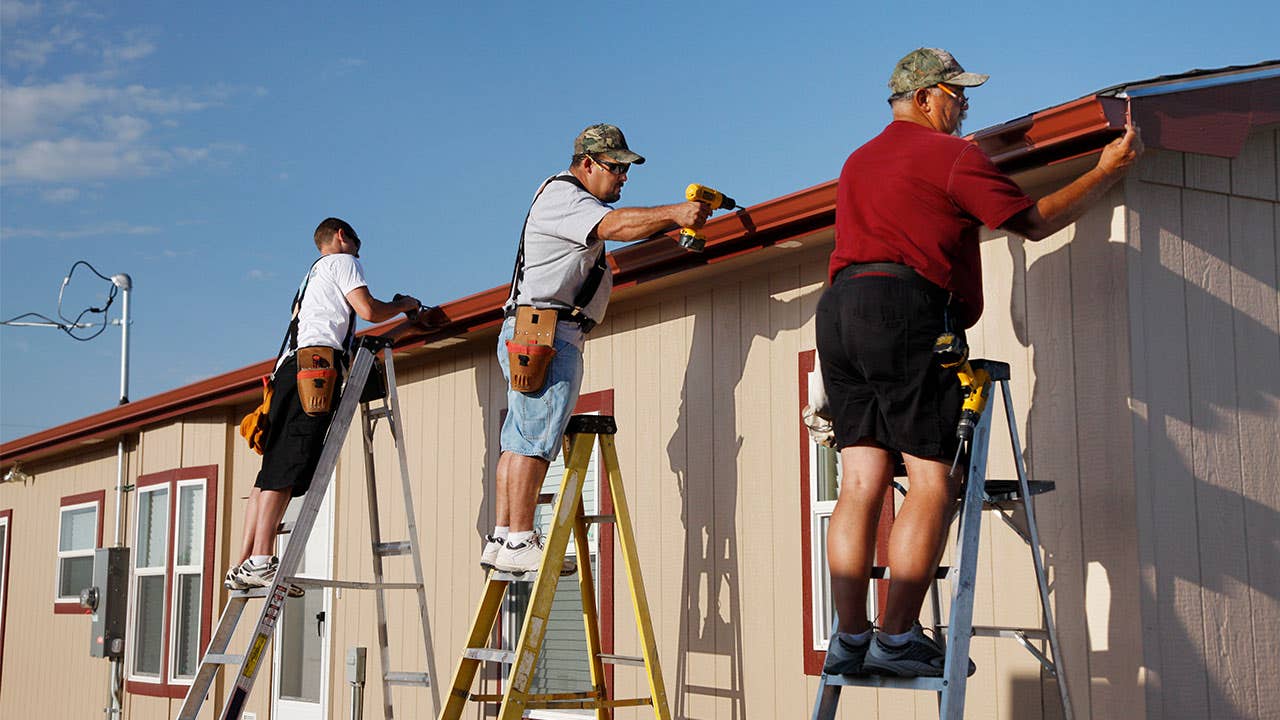

Articles
How Many HVAC Vents Per Square Foot
Modified: January 18, 2024
Learn about how many HVAC vents are needed per square foot in this informative article. Gain insight into optimizing airflow for optimal comfort and efficiency.
(Many of the links in this article redirect to a specific reviewed product. Your purchase of these products through affiliate links helps to generate commission for Storables.com, at no extra cost. Learn more)
Introduction
Welcome to our guide on determining the appropriate number of HVAC vents needed per square foot. When it comes to heating, ventilation, and air conditioning (HVAC) systems, ensuring proper airflow and temperature regulation is crucial for maintaining indoor comfort. One key component of an HVAC system is the vents, which distribute heated or cooled air throughout a building.
Understanding the optimal number of HVAC vents required per square foot is essential for ensuring efficient and effective HVAC performance. By following industry standards and guidelines, homeowners and professionals can make informed decisions regarding vent installation and enhance the overall functionality of their HVAC system.
This article will delve into the factors that influence the number of vents needed, provide standard guidelines, and offer tips for calculating the appropriate number of vents per square foot.
Key Takeaways:
- Proper HVAC vent installation is crucial for maintaining optimal airflow and temperature control in residential and commercial buildings. Consider factors like room size, layout, and HVAC system capacity to determine the right number of vents per square foot.
- Collaborating with HVAC professionals and following industry guidelines will ensure accurate calculations and efficient vent placement. Overcoming challenges in vent installation, such as obstructions and limited space, requires careful planning and coordination.
Understanding HVAC Vents
HVAC vents, also known as air registers or grilles, play a critical role in the distribution of conditioned air from the HVAC system throughout a building. Vents are typically located in the walls, ceilings, or floors and are designed to allow air to enter or exit a room.
These vents come in various shapes and sizes, with options such as floor registers, sidewall registers, and ceiling registers. They are usually made of materials like metal, plastic, or wood and feature adjustable louvers or dampers that allow for controlling the direction and volume of airflow.
The main function of HVAC vents is to ensure the proper and even distribution of heated or cooled air from the HVAC system into different areas of a building. By regulating airflow, vents help maintain comfortable temperatures throughout the space and prevent any hot or cold spots.
Furthermore, HVAC vents are crucial for maintaining proper air circulation and ventilation within a building. They allow for the exchange of stale indoor air with fresh outdoor air, improving indoor air quality and reducing the accumulation of dust, allergens, and other pollutants.
It is important to note that HVAC vents should be strategically placed to optimize airflow and avoid any obstructions. Proper vent placement ensures that the conditioned air can effectively reach all areas of a room, promoting balanced temperatures and a comfortable environment.
Now that we have a basic understanding of HVAC vents and their importance, let’s explore the factors that influence the number of vents required per square foot.
Factors Affecting the Number of Vents Needed
Several factors come into play when determining the appropriate number of HVAC vents needed per square foot. Understanding these factors will help ensure optimal airflow and temperature control throughout a building:
1. Room Size and Layout:
The size of a room directly affects the number of vents required. Larger rooms typically require more vents to distribute air evenly. Additionally, the layout of a room, such as the presence of partitions or obstacles, may affect airflow and necessitate additional vents in certain areas.
2. HVAC System Capacity:
The capacity and power of the HVAC system play a role in determining the number of vents needed. An undersized system may struggle to deliver sufficient airflow, necessitating additional vents to compensate. On the other hand, an oversized system may result in excessive airflow, requiring fewer vents.
3. Ceiling Height:
The height of the ceiling impacts how air circulates within a room. Tall ceilings may require more vents to ensure proper airflow from the HVAC system to the occupied space below.
4. Insulation and Air Leakage:
The insulation levels in a building can affect the amount of conditioned air that escapes, impacting heating and cooling efficiency. Proper insulation helps maintain airflow integrity, reducing the need for additional vents. Additionally, air leakage from doors, windows, or poorly sealed ductwork may disrupt airflow, which could necessitate additional vents.
5. Occupancy and Usage:
The number of people occupying a space and its specific usage can influence the ventilation requirements. Areas with higher occupancy levels or spaces that generate heat, such as kitchens or server rooms, may need additional vents to maintain comfortable temperatures.
6. Climate:
The local climate plays a role in determining the number of vents needed. In regions with extreme temperatures, additional vents may be necessary for efficient heating or cooling, ensuring consistent comfort year-round.
By considering these factors, homeowners and professionals can make informed decisions regarding the number and placement of HVAC vents, optimizing airflow and temperature regulation throughout a building. In the next section, we will explore standard guidelines for the number of HVAC vents per square foot.
Read more: How Much Grass Seed Per Square Foot
Standard Guidelines for HVAC Vents Per Square Foot
While there are no hard and fast rules when it comes to the exact number of HVAC vents needed per square foot, industry guidelines provide valuable recommendations. These guidelines serve as a starting point for determining the appropriate number of vents based on the square footage of a room or building:
1. Residential Buildings:
In residential buildings, a general rule of thumb is to have one HVAC vent for every 100-150 square feet of living space. For example, a 300 square foot bedroom would typically require 2 HVAC vents. However, this guideline can vary depending on the factors mentioned earlier, such as room layout and ceiling height.
2. Commercial Buildings:
In commercial buildings, the guidelines differ slightly. It is recommended to have one HVAC vent for every 150-250 square feet of floor space. Larger spaces, such as open-plan offices or retail areas, may require additional vents to ensure proper airflow and temperature regulation.
It is important to note that these guidelines are just a starting point and may need to be adjusted based on specific circumstances. Consulting with a professional HVAC contractor or engineer can provide valuable insight into designing the most efficient and effective vent layout.
Now that we have an understanding of standard guidelines, let’s explore how to calculate the actual number of vents required for a specific area.
Calculating the Number of Vents Required
To determine the exact number of HVAC vents needed for a specific area, it is best to follow a systematic approach. Here are the steps to calculate the number of vents required:
1. Measure the Area:
Start by measuring the square footage of the room or building where the vents will be installed. Calculate the length and width of the area and multiply them to get the total square footage.
2. Determine the Ventilation Rate:
Next, determine the recommended ventilation rate for the space. The ventilation rate is typically expressed in cubic feet per minute (CFM) and is based on factors such as occupancy, usage, and climate. Consult HVAC industry standards or consult with a professional to determine the appropriate ventilation rate for your specific needs.
3. Calculate the Total Ventilation Volume:
Multiply the square footage of the area by the recommended ventilation rate (in CFM) to calculate the total ventilation volume required. For example, if the square footage is 500 and the recommended ventilation rate is 0.5 CFM per square foot, the total ventilation volume would be 250 CFM (500 sq ft * 0.5 CFM/sq ft).
4. Determine Vent Capacity:
Check the capacity or airflow rating of the HVAC vents you plan to use. This information is usually provided by the manufacturer and is measured in CFM. Ensure the vents you select have a capacity that meets or exceeds the total ventilation volume calculated in the previous step.
Read more: Number Of Queen Size Bricks Per Square Foot
5. Calculate the Number of Vents:
Divide the total ventilation volume by the capacity of each vent to determine the approximate number of vents required. Round the result up to the nearest whole number to ensure sufficient airflow. For example, if the total ventilation volume is 250 CFM and the vent capacity is 50 CFM, you would need 5 vents (250 CFM / 50 CFM per vent).
It is important to note that this calculation provides an estimate and should be used as a starting point. Adjustments may be necessary based on factors such as the room layout, ceiling height, and other considerations. Working with an HVAC professional can help ensure the most accurate and effective vent placement.
In the next section, we will discuss some challenges that may arise during vent installation and offer tips to overcome them.
Overcoming Challenges in Vent Installation
While determining the appropriate number of HVAC vents is essential, it’s important to consider potential challenges that may arise during the vent installation process. Here are some common challenges and tips to overcome them:
1. Obstructions:
Obstructions such as beams, columns, or existing structures within the walls or ceilings can hinder the installation of vents. Careful planning and coordination with an HVAC professional can help identify potential obstacles and develop suitable solutions, such as adjusting vent placement or utilizing alternative installation methods.
2. Ductwork Design:
The design and layout of ductwork can significantly impact vent installation. Properly sizing and routing ductwork ensures an even distribution of airflow. It’s crucial to work with a qualified HVAC professional who can assess the layout and design the ductwork system accordingly, allowing for efficient and effective vent installation.
Read more: How Many Brick Pavers In A Square Foot
3. Limited Space:
In some cases, limited space within walls or ceilings can pose challenges for vent installation. Consideration should be given to the dimensions and type of vents used, as well as alternative installation methods such as using slim vents or exploring creative solutions like floor or baseboard vents.
4. Noise Reduction:
Ventilation systems can produce noise, impacting the comfort and acoustics of a space. To minimize noise transmission, ensure that vents are properly insulated and sealed. Additionally, selecting vents with built-in noise-reducing features, such as baffles or sound-absorbing materials, can help create a quieter environment.
5. Aesthetics:
The visual appearance of vents is another consideration during installation. Choosing vents that blend with the room’s décor or opting for custom-designed grilles can help maintain aesthetics while ensuring proper airflow. Collaboration with interior designers or architects can assist in finding the best solution that meets both functional and aesthetic requirements.
6. Compliance with Building Codes:
When installing vents, it is crucial to adhere to local building codes and regulations. Vents should be placed in compliance with fire safety regulations, accessibility guidelines, and any other relevant codes. Consulting with a licensed professional and obtaining necessary permits can help ensure compliance and avoid any legal or safety issues.
By considering and addressing these challenges during the vent installation process, homeowners and professionals can overcome obstacles and achieve an effective and efficient HVAC system. In the concluding section, let’s summarize the key points discussed in this article.
Read more: How Many Nails Per Square Of Vinyl Siding
Conclusion
Determining the appropriate number of HVAC vents per square foot is essential for maintaining optimal airflow and temperature control in residential and commercial buildings. By following industry guidelines and considering factors such as room size, layout, HVAC system capacity, and climate, homeowners and professionals can make informed decisions regarding vent installation.
Standard guidelines suggest having one HVAC vent for every 100-150 square feet in residential buildings and one vent for every 150-250 square feet in commercial buildings. However, these guidelines should be adjusted based on specific circumstances and professional advice.
Calculating the exact number of vents required involves measuring the area, determining the ventilation rate, calculating the total ventilation volume, and considering vent capacity. Collaborating with an HVAC professional ensures accurate calculations and efficient vent placement.
Overcoming challenges in vent installation, such as obstructions, ductwork design, limited space, noise reduction, aesthetics, and compliance with building codes, requires careful planning and coordination. By addressing these challenges, homeowners and professionals can achieve a successful vent installation process.
Ultimately, proper vent installation is central to achieving optimal comfort and indoor air quality. It ensures even distribution of conditioned air, efficient heating and cooling, and improved ventilation. Consulting with HVAC professionals and following industry guidelines will help homeowners and professionals maximize the benefits of their HVAC systems.
Remember, the number of HVAC vents required is not a one-size-fits-all solution and may vary for each building. Taking into account the unique characteristics of the space and seeking professional assistance will ensure the best results and long-term satisfaction.
So, whether you’re renovating your home or planning a commercial space, understanding the importance of HVAC vents per square foot will ultimately contribute to a comfortable and efficient indoor environment.
Frequently Asked Questions about How Many HVAC Vents Per Square Foot
Was this page helpful?
At Storables.com, we guarantee accurate and reliable information. Our content, validated by Expert Board Contributors, is crafted following stringent Editorial Policies. We're committed to providing you with well-researched, expert-backed insights for all your informational needs.










0 thoughts on “How Many HVAC Vents Per Square Foot”